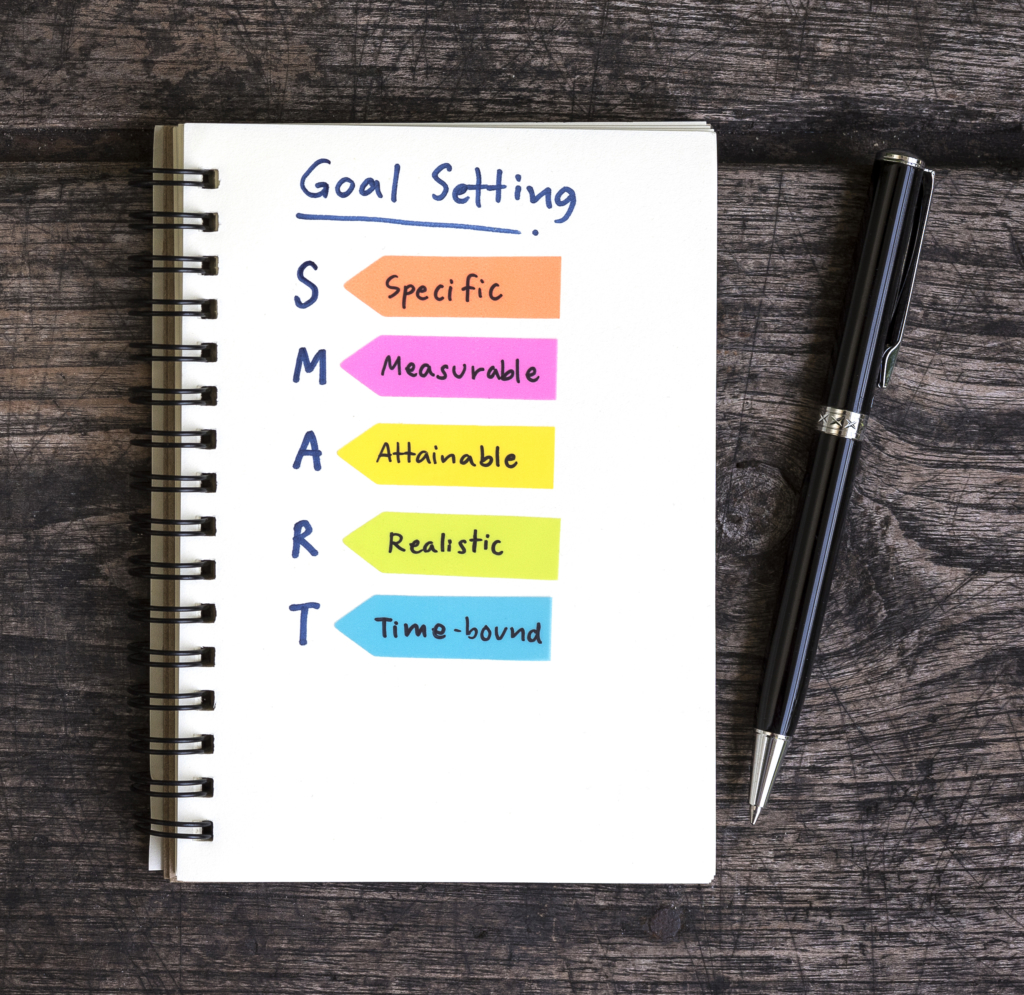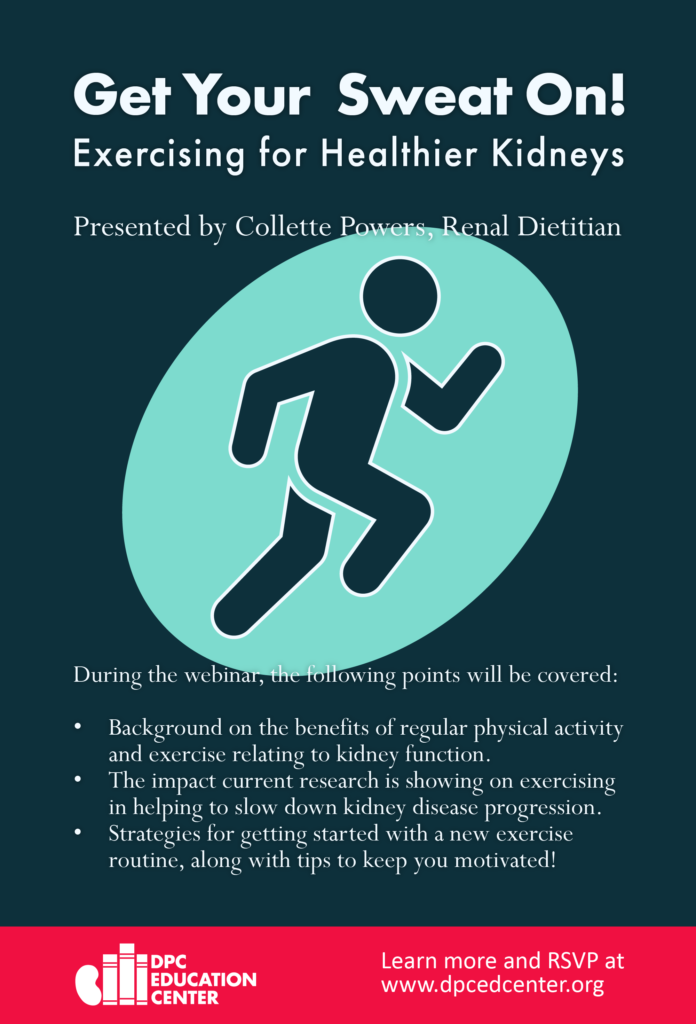By Collette Powers, MA, RDN, LDN, ACSM EP-C
We have all heard it, and we all know it. We have been told from our doctor, a friend or a loved one. Whether it is for controlling high cholesterol, managing weight, reducing blood sugar or keeping our bodies healthy overall, we have all been told at some point we should exercise. But did you know exercise may help protect your kidneys too? Fatigue is a common struggle that many patients with chronic kidney disease (CKD) face. When we are tired, our instinct is to rest. However, over time, that “rest” can lead to a very sedentary lifestyle, which has many downfalls when it comes to kidney health. As one becomes less active, they may experience increased muscle loss, decreased heart function and further worsening of their kidneys. Research has shown that one of the best ways to combat fatigue is to get up and move! Increasing your activity level has several benefits, including improved muscle strength, decreased anxiety and stress, and increased energy.1, 2

With additional research emerging, studies now also suggest that incorporating regular physical activity into your daily routine can help stabilize kidney function too!3 Exercise has been proven to reduce blood pressure and better manage blood sugar levels, which are the leading causes of CKD.4 Hypertension and diabetes cause damage to your blood vessels that supply blood to and from the kidney. Experts state that having good blood pressure and blood sugar control leads to increased blood flow and stronger blood vessels.5 Blood can then flow more naturally without the kidney and heart having to work as hard. This, in turn, helps protect your kidney function.
All right, all right, all right, we know exercise is important. But you may be wondering what type of exercise should I do? How long? How often? The National Kidney Foundation Kidney Disease Outcomes Quality Initiative suggests 30 minutes (cumulative) of moderate-intensity exercise most days of the week.2 This correlates with the Surgeon General’s recommendation of 150 minutes weekly.6 If you are just starting out, you may need to start with smaller increments of five to 10 minutes and build your way up. Ideally, physical activity should consist of four main components2:

- Aerobic—walking, bicycling, swimming, dancing
- Strength—lifting weights, toe raises, squats, push-ups
- Flexibility—stretching, yoga, tai chi
- Balance—standing on one leg, walking backwards, heel-toe walking
Exercise is not the same for everyone. The main idea is to find an activity you enjoy that is safe and fits into your lifestyle. So, before you get your sweat on, consider these two recommendations:
1. Consult your doctor. There are instances where it is recommended not to exercise. If you have a fever, are short of breath, experience chest pain or become lightheaded/ dizzy, DO NOT EXERCISE, and consult your doctor. You should speak with your doctor before starting a new exercise routine to assess the need for any activity limitations.

2. Make and write down a SMART goal. Pick an activity that is specific, measurable, attainable, realistic and timely. For example, which would you say is a true goal?
-
- I will ride my bike
- I will ride my bike for 15 minutes three times a week
You chose correctly if you picked choice B. Setting specific goals gives you a starting point. You can better track your progress and assess if and when you need to change your goal.
So you may be wondering, “Well how do I get started?” or “I want to protect my kidneys, but I HATE working out. What will work for me?” “How do I progress?” These are all terrific questions! Join me on March 28, 2019 at 2 p.m. EST as I talk more about ways to fit physical activity into your daily regime. I will discuss more about why exercise should be a part of your CKD management and share my triple P’s for success!
Collette Powers is a renal dietitian with Dialysis Clinic, Inc, https://www.dciinc.org and a chronic kidney disease dietitian with Reach Kidney Care, http://www.reachkidneycare.org.
References
-
- National Kidney Foundation 2014, Exercise: What You Should Know, accessed 5 November 2018, https://www.kidney.org/atoz/content/exercisewyska
- Kirkman DL, Lennon-Edwards S, Edwards DG. Exercise for Chronic Kidney Disease. Journal of Renal Nutrition: the Office Journal of the Council on Renal Nutrition of the National Kidney Foundation [Internet]. 2014 Oct 22 [cited 2018 Nov 5]; 24(6): e51-e53. Available from: https://www.ncbi.nlm. nih.gov/pmc/articles/PMC4255470/
- Milam RH. Exercise Guidelines for Chronic Kidney Disease Patients. Journal of Renal Nutrition [Internet]. 2016 July [cited 2018 Nov 5]; 26(4): e23-25. Available from https://www.jrnjournal.org/article/S1051-2276(16)00050-9/pdf
- National Kidney Foundation 2017, About Chronic Kidney Disease, accessed 5 November 2018, https://www.kidney.org/atoz/content/aboutchronic- kidney-disease
- The National Institute of Diabetes and Digestive and Kidney Diseases Health Information Center, Diabetic Kidney Disease, 2017, accessed 5 November 2018, https://www. niddk.nih.gov/health-information/ diabetes/overview/preventingproblems/ diabetic-kidney-disease
- National Prevention Council 2014, Active Living, accessed 5 November 2018, https://www.surgeongeneral.gov/ priorities/prevention/strategy/ active-living.pdf





